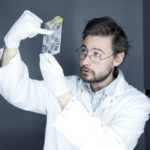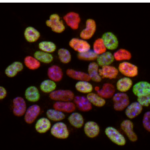Link to Pubmed [PMID] – 23178592
EMBO J. 2012 Dec;31(24):4547-62
NANOG, OCT4 and SOX2 form the core network of transcription factors supporting embryonic stem (ES) cell self-renewal. While OCT4 and SOX2 expression is relatively uniform, ES cells fluctuate between states of high NANOG expression possessing high self-renewal efficiency, and low NANOG expression exhibiting increased differentiation propensity. NANOG, OCT4 and SOX2 are currently considered to activate transcription of each of the three genes, an architecture that cannot readily account for NANOG heterogeneity. Here, we examine the architecture of the Nanog-centred network using inducible NANOG gain- and loss-of-function approaches. Rather than activating itself, Nanog activity is autorepressive and OCT4/SOX2-independent. Moreover, the influence of Nanog on Oct4 and Sox2 expression is minimal. Using Nanog:GFP reporters, we show that Nanog autorepression is a major regulator of Nanog transcription switching. We conclude that the architecture of the pluripotency gene regulatory network encodes the capacity to generate reversible states of Nanog transcription via a Nanog-centred autorepressive loop. Therefore, cellular variability in self-renewal efficiency is an emergent property of the pluripotency gene regulatory network.

